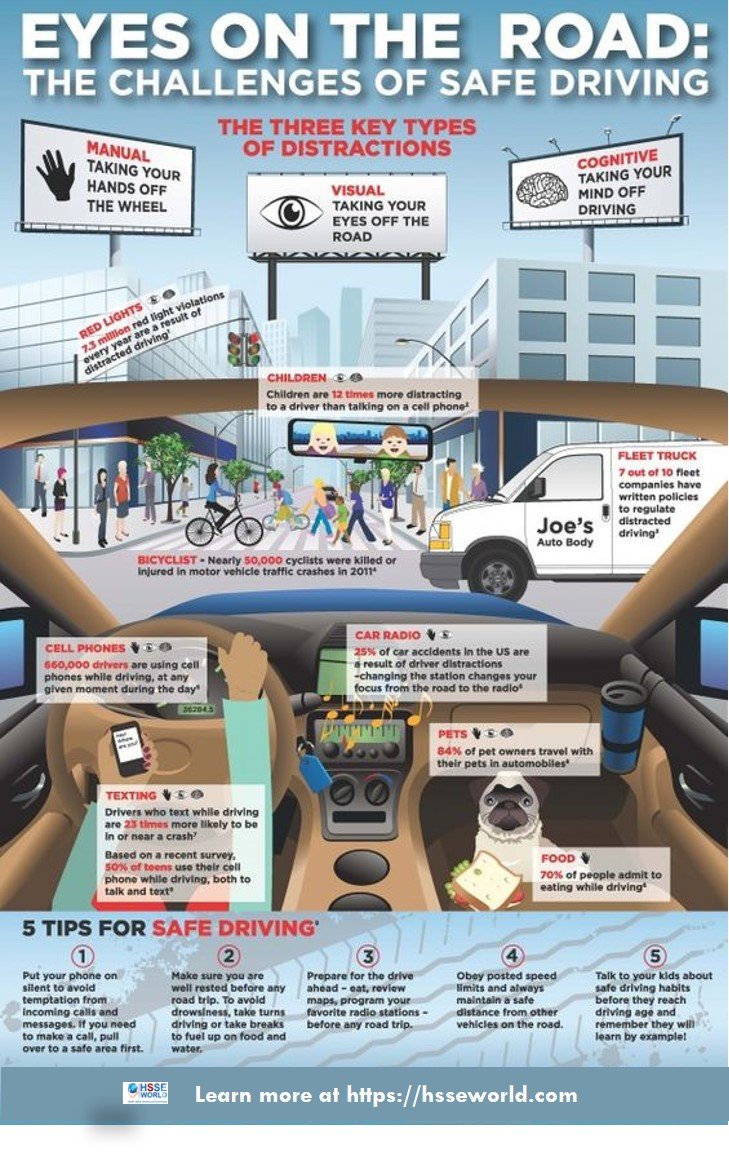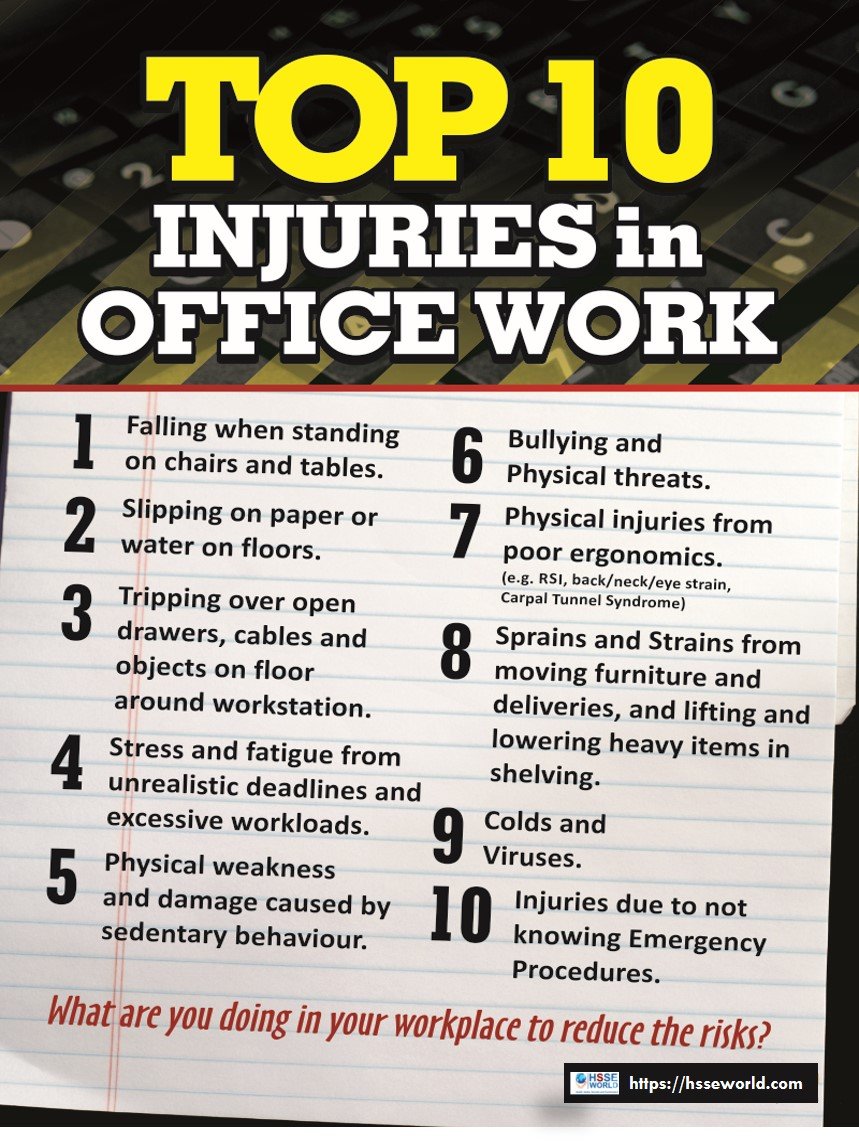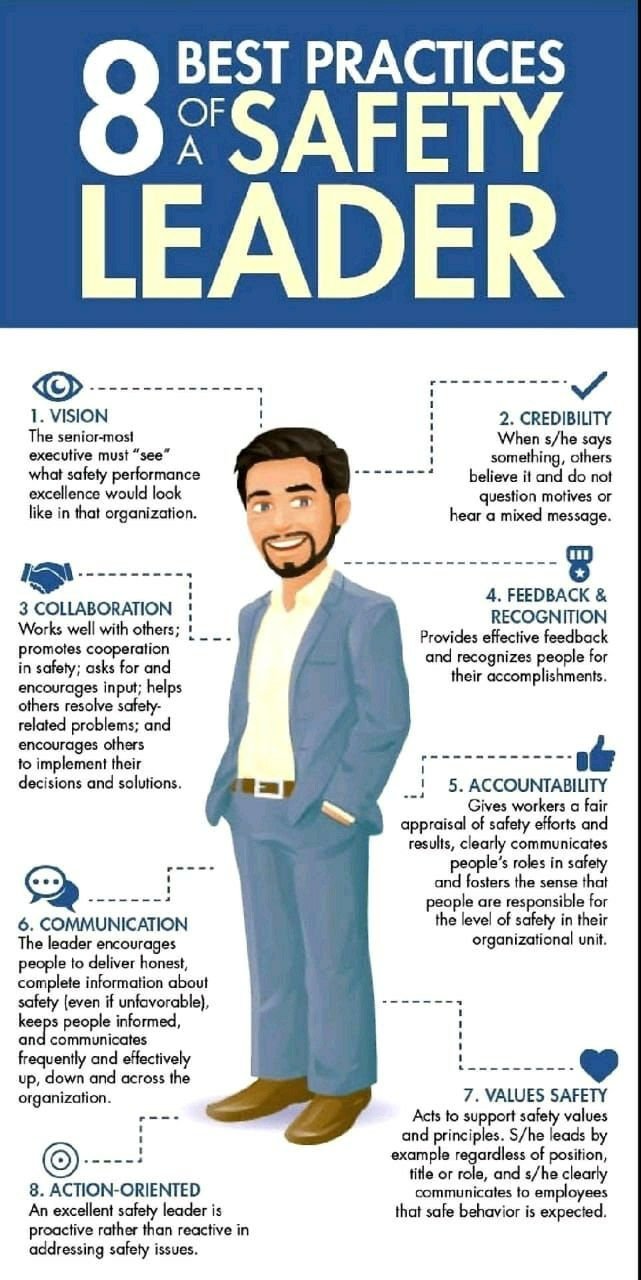Do you engage in distracted driving behaviors? Distracted driving occurs anytime your attention is not focused on driving or the road ahead. Distractions can be cognitive, visual, or manual, but they all take away from your main responsibility when you’re behind the wheel that of driving safely.

Distracted driving is any activity that diverts attention from driving, including talking or texting on your phone, eating and drinking, talking to people in your vehicle, fiddling with the stereo, entertainment, or navigation system anything that takes your attention away from the task of safe driving.
Texting is the most alarming distraction. Sending or reading a text takes your eyes off the road for 5 seconds. At 55 mph, that’s like driving the length of an entire football field with your eyes closed.
You cannot drive safely unless the task of driving has your full attention. Any non-driving activity you engage in is a potential distraction and increases your risk of crashing.
Using a cell phone while driving creates enormous potential for deaths and injuries on U.S. roads. In 2018 alone, 2,841 people were killed in motor vehicle crashes involving distracted drivers.
We can all play a part in the fight to save lives by ending distracted driving.
Teens
Teens can be the best messengers with their peers, so we encourage them to speak up when they see a friend driving while distracted, to have their friends sign a pledge to never drive distracted, to become involved in their local Students Against Destructive Decisions chapter, and to share messages on social media that remind their friends, family, and neighbors not to make the deadly choice to drive distracted.
Parents
Parents first have to lead by example — by never driving distracted — as well as have a talk with their young driver about distraction and all of the responsibilities that come with driving. Have everyone in the family sign the pledge to commit to distraction-free driving. Remind your teen driver that in states with graduated driver licensing (GDL), a violation of distracted-driving laws could mean a delayed or suspended license.
Educators and Employers
Educators and employers can play a part, too. Spread the word at your school or workplace about the dangers of distracted driving. Ask your students to commit to distraction-free driving or set a company policy on distracted driving.
Make Your Voice Heard
If you feel strongly about distracted driving, be a voice in your community by supporting local laws, speaking out at community meetings, and highlighting the dangers of distracted driving on social media and in your local op-ed pages.
According to the National Highway Traffic Safety Administration, there are approximately 660,000 distracted drivers on the road every day during daylight hours. This creates a hazard not just for those drivers, but for every car around them as well as bikers and pedestrians on or along the roadway. So what can you do to cut down on this dangerous trend? Here are 10 tips to help you stay safe and focused on the road:
- Never use your phone while driving. You can turn your phone off, turn it upside down, or stow it away in your glove box or backseat to remove the temptation to answer notifications.
- Remember, hands-free phone calls can still create cognitive distractions. If you are having a conversation, you’re not fully focused on the road ahead. Calls can wait until you get safely to your office or home.
- Set your GPS before you turn the car on. This will help avoid fumbling over addresses while you drive.
- If you have a new car, make sure to familiarize yourself with its features, like windshield wipers, heat, air, etc, so that you aren’t fumbling to figure them out as you drive.
- Avoid eating in the car. Make time to eat before you leave or after you get to your destination.
- Finish grooming tasks, like doing your hair, makeup, or shaving, before you get in the car.
- Make sure everything is secure in your car before you leave. Having things roll around under your seat or in the backseat of your car can be a dangerous distraction.
- If you’re driving with young children or pets, make sure they are secure and have everything they need before you go.
- Young drivers should limit the number of passengers they have in the car. Passengers should do everything they can to help drivers stay focused when they are behind the wheel.
- Always model good behavior for your kids. If they see you using your phone while you’re driving, they may think this is acceptable behavior.
Making sure our roads are safe is a responsibility everyone can take part in. Follow these simple safety techniques to make sure you’re focused on the road ahead every time you drive.
(learn more: Tips to avoid standstill accidents safety moment33/).
Download the Infographic
Eyes on the Road The challenges of safe driving
More photos:
- What are the Best Practices for Managing Subcontractor Risk
- Photo of the day: 10 Essential Safety Tips for Driving in Hot Weather Conditions
- Photo of the day: best workplace safety tips
- Photo of the day: The Importance of Stop Work Authority in Maintaining Workplace Safety
- Photo of the day: Tomorrow’s Reward for Working Safely Today: Cultivating a Culture of Safety
- Photo of the day: Preventing slips and trips at work
- Photo of the day: Learn the DRSABCD action Plan
- Working with Electricity Electrical Accidents Guide for Electrical Workers
- Photo of the day: Hearing Protection Device Selection
- Photo of the day: If An Earthquake Shakes You-Infographic free
- Fire Safety Posters Free Download
- Photo of the day: First Aid for Electrical Burns-Infographic free
- Infographic: First Aid for Cuts and Scrapes free download
- Photo of The day: Work Safe with Lasers-Laser Safety free
- Photo of the day: Working Safely with chemicals and chemical Management
- Photo of the day: Safe work practices when using MEWPs ( updated)
- Photo of the day: Preventing Common Kitchen Hazards
- Photo of the day: Safe handling of Gas Cylinders and lecture bottles
- Photo of the day: Forklift Stability Triangle
- Photo of the day: Defective Tools Safe Work Practice
- Photo of the day: Lift With Your Legs Not With Your Back
- Photo of the day: First Aid for burns
- Photo of the day: The 7 Principles of HACCP
- Photo of the day: Working Safely with Suspended Loads
- Photo of the day: Heat Stroke First Aid and safety posters
- Photo of the day: Near-Miss Reporting and Posters
- Photo of the day: Ergonomic chair and office chair safety tips
- Photo of the day: Whole Body Vibration
- Photo of the day: Substation Safety Equipment
- Photo of the day: Bypassing Safety Controls Rules
- Photo of the day: Lightning Safety Tips
- Photo of the day: Overhead Power lines Clearance
- Photo of the day: Floor Marking
- Photo of the day: Types of Foot Protection
- Photo of the day: Types of Hand Protection
- Photo of the day: Lockout and Tagout Safety
- Photo of the day: Fall Protection Plans
- Photo of the day: Flood Safety Tips
- Photo of the day: Read All Labels Work safe
- Photo of the day: Run Project safely with Crane Hand Signals
- Photo of the day: Flagman and Traffic control
- Photo of the day: Managing Risks of Exposure to Solvents in the workplace
- Photo of the day: Scissor Lift Safety
- Photo of the day: HSE Bulletin Board
- Photo of the day: Arc-Fault Circuit Interrupters (AFCI)
- Photo of the day: Safe use of ladders and step ladders
- Photo of the day: Concrete Truck Driver Hand Signals
- Photo of the day: Extension Cord Safety Tips
- Photo of the day: Protect your Head
- Photo of the day: choosing the right Anchorage
- Photo of the day: Work-Related Asthma
- Photo of the day: Top FIVE Heavy Equipment Construction Site Safety Tips
- Photo of the day: sun safety in the workplace
- Photo of the day: Cannabis and Impairment in the Workplace
- Photo of the day: Position for safety and comfort-Safety Tips
- Photo of the day: Generator Safety
- Photo of the day: Controlling COVID-19 in the Workplace-Physical Barriers
- Photo of the day: Manual Material handling
- Photo of the day: Personal Protective Equipment last resort
- Photo of the day: WHMIS 2015 – Pictograms
- Photo of the day: Indoor Air Quality
- Photo of the day: Noise in the affected workplace
- Photo of the day: Fatigue at Work
- Photo of the day: Don’t be Driven to Distraction
- Photo of the day: working in heat and Humidex Rating
- How to use Plate Clamps Safely: Safety Moment#34
- Photo of the day: Sitting at work
- Photo of the day: 5 ways to reduce the risk of Slipping and Tripping
- Photo of the day: Preventing the spread of contagious illness
- Photo of the day: Incident Investigations
- Photo of the day: 10 Scaffold Safety Essentials
- Photo of the day: Effective Health and Safety Committees
- Photo of the day: New worker Orientation & Safety Orientation checklist
- Photo of the day: Workplace Inspection
- Photo of the day: musculoskeletal disorders
- Photo of the day: Emergency preparedness in the workplace
- Photo of the day: Mental health in the workplace
- Photo of the day: Trenching Safety Tips That Can Save a Life
- Photo of the day: Dangerous Goods Classes
- Photo of the day: Safety Equipment for Confined Spaces
- Photo of the day: Tips to reduce Heat stress in the workplace
- Photo of the day: hierarchy of controls
- Your steps to chemical safety
- H2S Gas and how to handle its Emergency
- Photo of the day: Importance of Mock drill and Fire Action Emergency Procedure
- Photo of the day: Choosing the Right Face Mask and the difference between a respirator and face mask
- Photo of the day: Confined space safety Precautions
- Breath Safely: The Proper Use of Respiratory Protection
- Photo of the day: Electric shock survival
- Photo of the day: Chemical Spill Emergency Response
- Photo of the day: Construction Site fire Safety
- Photo of the day: Confined Space rescue
- Photo of the day: Conveyors Safety Tips




